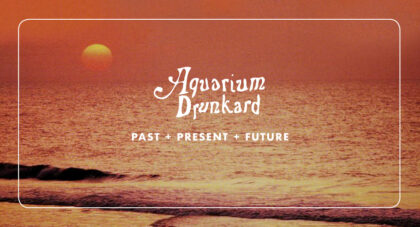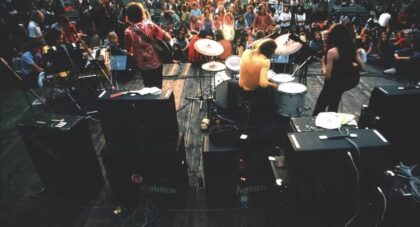It's been five and a half years since we last spoke with Lambchop's Kurt Wagner - around the release of 2008's OH (Ohio) - and it's been a productive set of years. The group played an awe-inspiring set at Merge Records' 20th Anniversary festival in 2009 - a show recorded and released for posterity on DVD and CD - and released the fantastic Mr. M in 2012. Now comes a re-release of their 2000 album, Nixon. Out this week via Merge, the package contains a re-master of the original album, plus a White Sessions recording from 1998.
Earlier this month, we caught up with Wagner to discuss the reissue, their success in Europe around the album's original release, its iconic artwork, and the unfortunate passing that made looking back on Nixon a bit tougher. Oh, and how a spot in the Country Music Hall of Fame gift shop would be just fine.
_______________________________________________________________________________
Aquarium Drunkard: You have this really nice reissue of Nixon coming out January 28th. This is one of the first sort of purposeful reissues - as opposed to if something were out of print - that the band has really done. How much involvement did you have in the process of creating what this was going to look like?
Kurt Wagner: Nixon actually had received the reissue treatment in Europe prior to this and I think they modeled it after that in terms of the packaging. Mainly the idea was presented that it had never been released on vinyl in the U.S. and that was sort of the motive - and then eventually grew into the idea that we should release some CDs as well. So they took the vinyl packaging as it appeared in Europe and presented it here. Then, of course, the additional stuff was stuff that I found around here. So I did dig around a little bit. It was prior to the digital age for the most part, so it was difficult to find things that weren't on cassette. [laughs] It was either on cassette or two-inch tape or something pretty antiquated, so the archival part of it was a little limited because of the quality of the material of what I could find.
AD: Usually people will pick albums to reissue on some sort anniversary basis. Nixon is 14 years old this year. So why select this as opposed to any other album in the Lambchop catalogue?
Kurt Wagner: Well, I think Merge was looking at it mainly from their perspective at 25 years and they are trying to represent the scope of what they've done over 25 years and looking at this as part of their label and something that might represent a significant moment in Merge history or ours as well. I think that's why it fell into a weird time frame. I think the whole notion of this series they're putting out is to celebrate the sort of milestones of various bands or important records that they wanted to highlight as a label.
Only the good shit. Aquarium Drunkard is powered by its patrons. Keep the servers humming and help us continue doing it by pledging your support.
To continue reading, become a member or log in.


